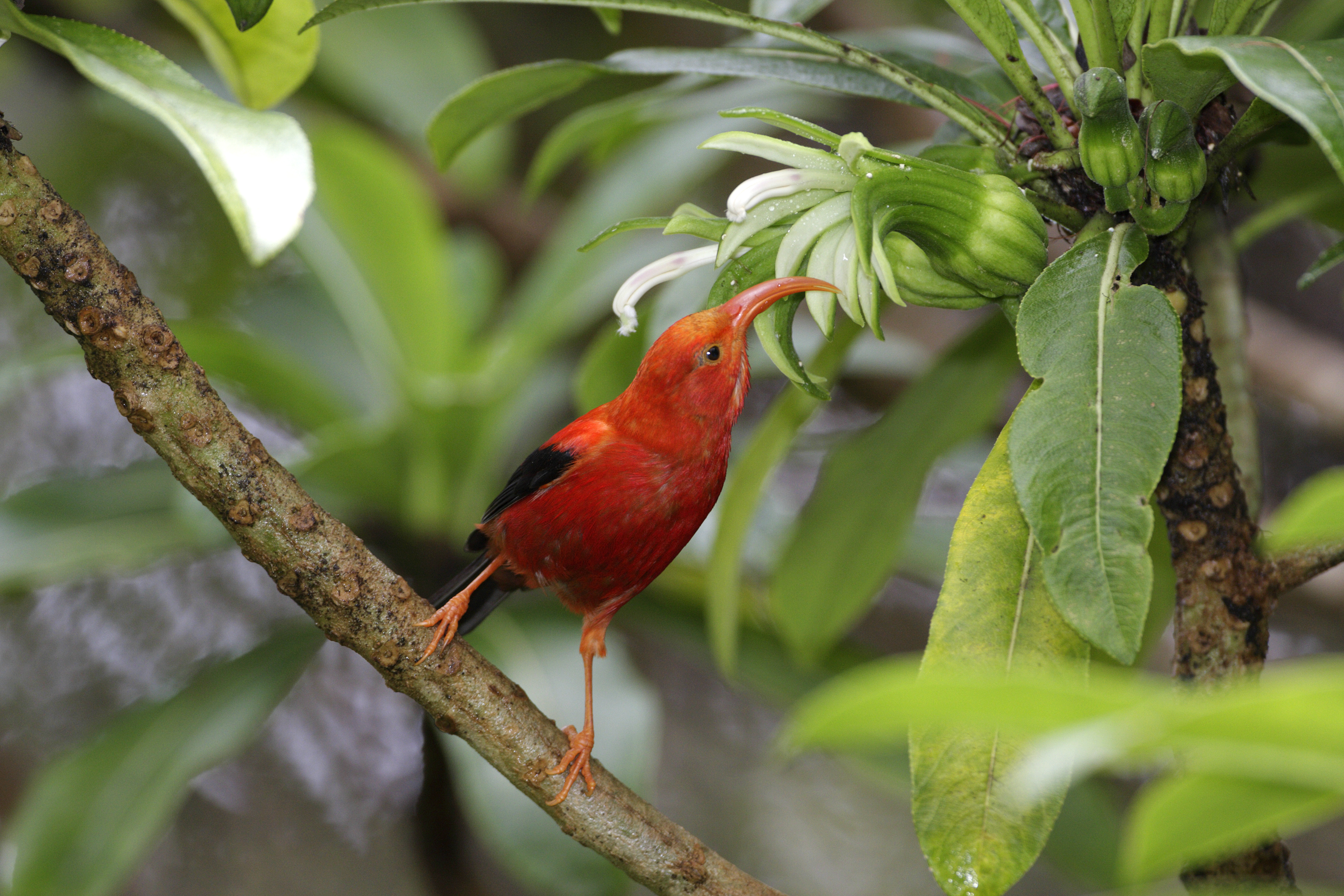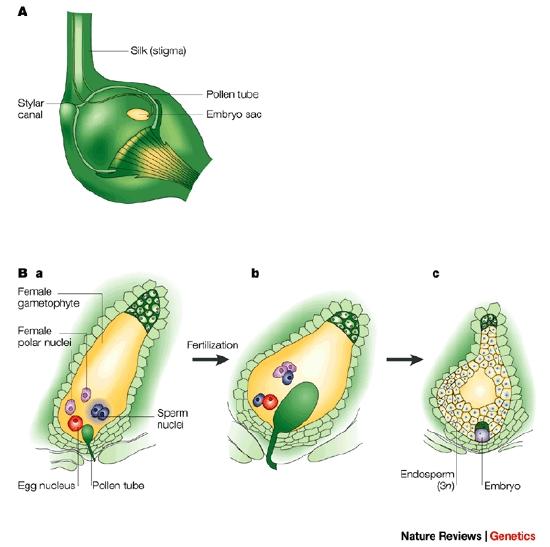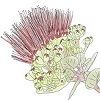5.2: Plant reproduction- pollination and fertilization
- Page ID
- 59257
The process of sexual reproduction in plants consists of several chronological steps:
- Production of flowers
- Pollination
- Fertilization (produces seeds)
- Formation of fruits
As with animals, for sexual reproduction to happen in plants the sperm needs to join the egg. The sperm of plants is contained in the pollen grains, therefore the pollen must be transferred to another plant for sexual reproduction to take place. Since plants cannot walk to find a mate, they have to use other means of bringing the pollen to the egg. Pollination is defined as the transfer of pollen from the male part of a flower to the female part of the flower, usually the flower on another plant. Some species of plants will self-pollinate (pollen is transferred to the stigma of the same flower); however, the majority of flowering plants out-cross (are pollinated by another plant). This interchange of genetic material, a characteristic of sexual reproduction, increases diversity in the population. Genetic diversity is important because that’s how plants can adapt to new challenges. If all plants in a population have the same genetic makeup (clones), as is the case with plants that reproduce mainly asexually (e.g. bananas), they may all get killed by a disease. However, if some plants in the population have a different gene that provides resistance to that disease, they will survive and be able to pass on their genetic material to their offspring. Flowers provide a clear advantage to flowering plants, allowing them to reproduce sexually. This is one of the reasons why flowering plants are so successful and are the dominant group of plants in most of the terrestrial ecosystems on our planet.
In some plants, like pine trees, the pollen is transported by water or by wind. This strategy is very energy-consuming for the plant, as it requires the plant to produce millions of pollen grains to ensure that at least some of them will reach a nearby female flower of another plant. Flowering plants have evolved an innovative strategy where they enlist the help of animals to transfer the pollen to the female parts. Through this strategy plants do not need to produce as much pollen, since pollinators will visit the same type of plant, ensuring the successful transfer of pollen to the right target. However, the plant will likely have to produce other substances, like nectar, to attract pollinators. Insects are the most famous pollinators, with bees and butterflies attracting the attention of many of us. However, some plant species are pollinated by birds, bats, or even lizards. In Hawai‘i, native plants have coevolved with certain animals for millions of years, forming some unique pollination strategies. For example, lobeliads can only be pollinated by native nectariferous birds like the ʻi‘iwi (Drepanis coccinea). If you look at the shape of the lobeliads flowers you will see how they fit to the shape of the bird’s beak (Figure \(\PageIndex{1}\)). Because of the specificity of this pollination strategy, these plants are in danger of extinction, as many of the native Hawaiian forest birds have gone extinct or are so rare that the plants are not getting pollinated.

Once the pollen that is brought in by a pollinator comes in contact with the stigma of the flower, a pollen tube grows down into the style of the flower. The tube elongates to reach the ovary, where it releases two sperm cells. One of these sperm cells will find the ovule (egg) and it will fertilize it to form the zygote. Fertilization is the fusion of the male and female gametes (reproductive cells), forming a zygote and eventually an embryo (baby plant). Flowering plants have a unique process of fertilization, called double fertilization, where through the process of fertilization they produce an embryo as well as an energy pack to feed the embryo (endosperm). We will describe this process here in the simplest terms. As mentioned above, one of the two sperm cells that were released from the pollen grains and delivered to the ovary via the pollen tube will join the egg to give rise to an embryo, while the other sperm cell will fuse with a structure, found inside of the plant egg, called the polar nucleus giving rise to a nutritive tissue called the endosperm. Both embryo and endosperm are located inside the seed (Figure \(\PageIndex{2}\)). The endosperm is important because it is the energy reserve that the embryo will use to grow during the germination process.



